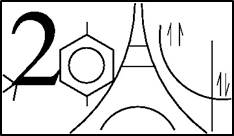Periodic Density Functional Theory (DFT) calculations on apatite lattice have been performed to investigate the chemical composition effect on He diffusion and its impact on the (U-Th)/He thermochronometer. Two preferential diffusion directions in both structures have been identified, one along the fluorine atoms and the other one in the plane orthogonal to the later direction. A NEB has been used to determine the activation energies, which range from 95,500 to 106,100 kJ/mol for the F-apatite and from 79,118 to 166,920 kJ/mol for the Cl0.25-apatite. According to the energy barriers a small anisotropy is noticed in the case of the pure F-apatite and a more pronounced anisotropy in Cl0.25-apatite. Consequently He diffuses preferentially in the plane in case of Cl0.25-apatite while a 3 dimension (3D) diffusion process is observed in the pure F-apatite at low temperature.
In a second part, Kinetic Monte Carlo calculations have been performed to simulate the He 3D diffusion in the two-apatite lattices composition. From these calculations the Arrhenius law gives us access to the diffusion coefficient for infinite crystal such as:
D (cm2/s)=2.810-4 (cm2/s) exp(-98.94 (kJ/mol) / RT)pure F-apatite
D (cm2/s)=3.010-4 (cm2/s) exp(-108.00 (kJ/mol) / RT)Cl0.25-apatite
He diffusion in F-apatite is significantly different that for the Cl0.25-apatite, with calculated closure temperature of 41 to 71°C, for a 50 micron grain size and a cooling rate of 10°C/Ma. . On can conclude that (1) the apatite grain shape and size are important parameters, as even the slight anisotropic He behavior of the F-apatite has some impact on the He age. The use of the active radius4 allows taking account of this behavior and will reduce the age dispersion. And (2) for high chlorine content (≥25%), He diffusion behavior is significantly different compared to F-apatite and can explain some not understood He age variations.
- Poster

 PDF version
PDF version
